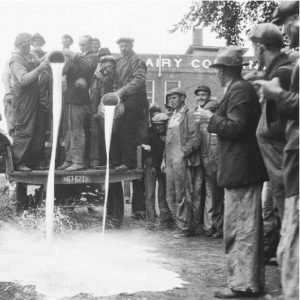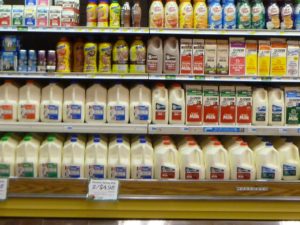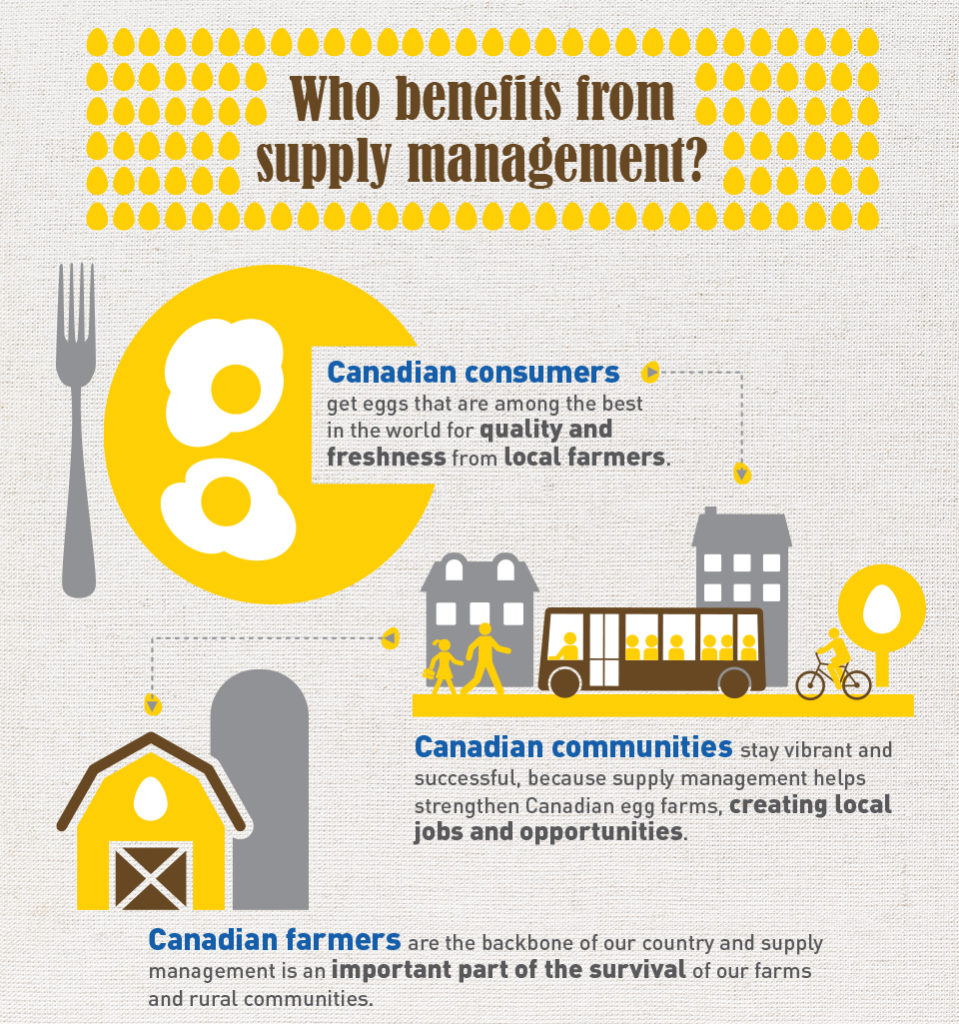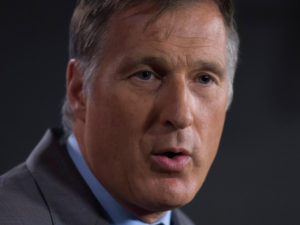 By Ray Rivers
By Ray Rivers
September 1st, 2018
BURLINGTON, ON
The one thing that all of our federal parties agree on is their support for Canada’s supply management system. Pierre Trudeau may have invented the program for dairy, poultry and turkeys back four decades ago, but Brian Mulroney expanded it in his time. And Parliament unanimously endorsed supply management in 2005. The alternative to supply management is what we saw back in the sixties and what see south of the border now.

When markets were saturated milk got poured into fields. Supply management controls what is produced and farm incomes are kept stable.
Periodically farmers in Wisconsin and other big dairy states will dump millions of gallons of milk out behind the barn and into their plowed fields. They have no other option since the markets are saturated and they couldn’t even give the product away. But it’s no big deal because they know there is a federal cheque on the way to tide them over – until the next time.
It’s about market signals. That invisible hand of Adam Smith which worked so perfectly in economic text books goes numb when put into practice in our imperfect world. However Canada’s quota supply management system gives farmers market certainty, so they can plan their expenditures accordingly. The result has been stability and wealth creation.
But not everyone agrees with supply management. Donald Trump for one, as he has threatened to end NAFTA unless Canada shuts it down. He’d prefer all that Wisconsin milk to be dumped in Canada instead of in the furrow behind the plow so he could get away with paying his farmers a smaller subsidy. But not all Americans agree with Trump.
The Wisconsin Farmers Union, the National Family Farm Coalition and Institute for Agricultural & Trade Policy, support Canada’s right to manage its internal food production system. In fact they have been lobbying for the US to adopt its own comparable supply management system. And they’ll probably have as much success as those Americans advocating the adoption of Canadian-style single-payer health care.
Opponents of supply management argue that the system is inherently less efficient than the unregulated market alternative. Were that true the price of milk should reflect such inefficiency. But that is not the case. The 2018 AC Nielson Fresh Milk Price Report studied what consumers have to pay in a number of countries, in Canadian dollars, over the twelve month period ending in October 2017.

Canada had the least expensive milk
Canada, at $1.50 a litre, had the least expensive milk among the nations surveyed. Australia was next at $1.57, followed by the US at $1.61 for Canadian comparable rBST-free (hormone free) milk. Prices in France came in at $1.77 per litre and export oriented New Zealand surprisingly sold its domestic milk for $1.83 a litre, raising the question of how it manages to sell as much as it does in export markets at that price. Tiny New Zealand owns between 12 to 16% of the global export market, compared to Canada which has virtually none.
New Zealand and Australia have the huge advantage that dairy farmers there don’t require costly winter housing or much stored feed for their animals. New Zealand dairy farm costs may be as little as half those in Canada as a result. But that many dairy cows in the historic land of the flightless kiwi bird has taken it’s toll. It is estimated that 60% of the internal waterways there are contaminated with animal wastes to the point that it is unsafe to swim. And agriculture has become the leading source of greenhouse gas emissions (GHG) for that country.
Methane is over twenty times more powerful a GHG pollutant than carbon dioxide and cows emit a lot of methane as they digest their food. Then there is all the inevitable manure and the extensive application of nitrogen fertilizers used to enhance pastures. As a result, New Zealand has grown it’s GHG emissions by almost 20% just since 1990.
Canadians spend a relatively small percentage of their household budget on food, roughly 10%, down considerably from only a couple decades ago. So perhaps that is why so few Canadians can be bothered learning how their market quota system works. An Angus Reid poll indicated that most Canadians admitted they knew “nothing at all” about Canada’s dairy system.

The system also takes wide price swings out of an important part of a food source.
It is a complicated process with federal and provincial milk boards and quotas for industrial and fluid milk, etc. And that makes it politically vulnerable, as we have seen with other complicated programs – like Ontario’s now cancelled cap and trade system. The general public likes things made simple, and which can be explained in a sound bite. So almost a quarter of ordinary Canadians would be OK were the system scrapped, and almost half would be willing to sacrifice it in NAFTA negotiations.
However there is also a chorus of well educated, vocal and persistent detractors who seriously want Canada to ditch its supply management system. And these advocates span the political divide. Liberal parliamentarian Martha Hall Findlay made scrapping it her major policy plank, which partly explains her loss to Justin Trudeau in the last Liberal leadership contest. And Maxime Bernier, the odds on favourite to win the recent Conservative leadership race narrowly fell on this issue to Andrew Scheer, and was defeated by dairy sector delegates from his home province.

Maxine Bernier, who wants to abandon supply management, comes out of a province where there are more milk producers than any other province.
Bernier, who has been described as a true libertarian, has now left the Tories and is threatening to create a new neo-conservative party of his own. Conservatives can recall how the last right wing splinter party, Reform, helped give the Chretien Liberals three consecutive majority governments, and led to the virtual destruction of the party of Sir John A.
So one can hardly blame them for being a little nervous about Bernier’s intentions and his appeal to the right wing of Canadian politics, joining the Libertarian party and the so-called Christian Heritage. And that should make Mr. Scheer want to reconsider his party’s discomfort with either a preferential ballot or proportional representation electoral system, particularly if Bernier resonates as well as he has in the past.
Friday, August 31 was the deadline Trump gave for Canada to cave into all of the US demands or there’d be no deal and the US would tariff us into oblivion. And if we licked his boots Canada could become a signatory to the deal Trump struck with Mexico. The US was not going to compromise on any of their conditions. Art of the deal or not, if one side won’t compromise it’s called capitulation, not negotiation. NAFTA is kaput unless this Congress, which has the annoying habit of asking ‘how high before Trump can say jump’, is willing to stop him.
The dairy producing sector is declining globally and milk producers everywhere are worried about their fate – except in Canada. Milk is healthy for children but indigestible for many of us once we reach adulthood. Even Trump doesn’t drink the stuff. But milk is entrenched in Canada’s Food Guide and milk protein has been integrated into so much of our food processing and specialty products that it will continue to be with us into the foreseeable future.
Recent polling shows that almost all Canadians are overwhelmingly content with the range and quality of dairy products available in Canada and two-thirds of Canadians are satisfied with the prices they pay.” If it’s not broken we should not be fixing it, no matter what Mr. Trump thinks he wants and how inappropriately he tries to bully us.
 Ray Rivers writes regularly on both federal and provincial politics, applying his more than 25 years as a federal bureaucrat to his thinking. Rivers was once a candidate for provincial office in Burlington. He was the founder of the Burlington citizen committee on sustainability at a time when climate warming was a hotly debated subject. He earned a degree in economics. Tweet @rayzrivers
Ray Rivers writes regularly on both federal and provincial politics, applying his more than 25 years as a federal bureaucrat to his thinking. Rivers was once a candidate for provincial office in Burlington. He was the founder of the Burlington citizen committee on sustainability at a time when climate warming was a hotly debated subject. He earned a degree in economics. Tweet @rayzrivers
Background links:
Supply Management – Bernier – Conservative Policies –
New Zealand and Dairy – New Zealand Emissions –


















Where do you cherry pick your milk prices from?
Google > Tops Friendly Market in Niagara Falls NY and a gallon of 2% is $ 1.59 USD
(probably chock full of hormones, preservatives & antibacterials for added flavour)
On this side of the border, three litres of the white stuff = $4.50 CDN – more than double.
Plus our milk seems to go bad after about 3 days and needs to be poured down the drain.
Why can’t farmers determine how much to produce. Why do we need a government overload to tell them how much and hand them a subsidy of our money. Prices are higher here than most places and the only goal of supply management is to keep prices inflated to the benefits of the dairy farmer hence: shorten supply and prices rise but have yet to hear anyone is supply management say prices are too high, go ahead and produce more. Always the opposite. If this is so good then why isn’t is used in a lot more industries. Why not Ford. There is too many cars on the road. Lets shrink the supply so that workers and management get higher wages and cars will cost triple. This is preposterous. Lets let the market decide.
Good article Ray. There’s another dimension that gets too little coverage I’m sure, in the US press. It’s the large surplus the US enjoys in overall milk product trade; I presume from yogurt through butter to cheese, and all the modern consumer variants. I expect that if we give up anything in the trade negotiations there’s an expectation we’ll narrow that gap elsewhere. How we get there I don’t know, but it’s a reasonable expectation.
I agree to with the comment that we should bar import of BGH-containing dairy products of all type. Doug
“……and two-thirds of Canadians are satisfied with the prices they pay…”
They do ???….wow, our prices of cheeses and dairy must be one of the highest in the world !!!
Recent travels to Europe, and buying some of it over there, has convinced me of that. Cheese in France and Spain are a fraction of what we pay in Canada. Supply management should end, with or without Trump.
Ray,
This is a brilliant piece.
The mid-term elections are coming up soon in the U.S. and Trump needs to have something he can call a Win to keep his base motivated.
Trump has been loudly insisting Canada stop charging tariffs on dairy products on all milk they export to us that is above a fixed quota. He has been Trumpeting this message daily for a while now which leads me to believe Canada has already agreed to something Trump can spin as a Win.
It doesn’t have to be an all or nothing deal, that’s why it’s called, “negotiating.” I doubt Canada is going to kill the milk marketing board, we’ve probably agreed to modify it in some way. Then Canada can say we protected the Milk Marketing Board and Trump can say he forced Canada into allowing more milk to be exported to Canada.
My main concern is we don’t allow any dairy into Canada that contains the Bovine Growth Hormone. It’s not approved in Canada’s at the moment and I think it’s important we keep it that way.